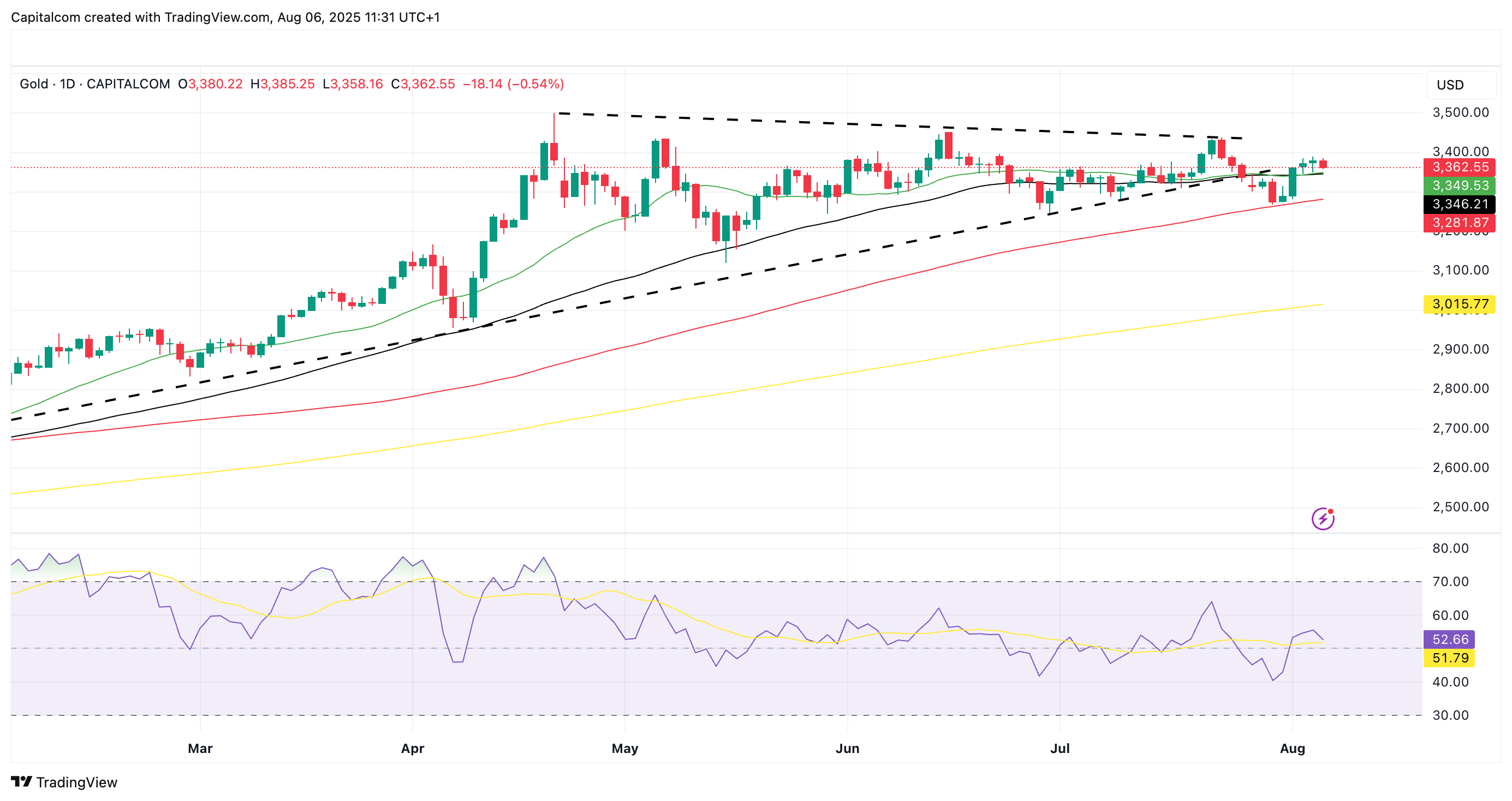Gold (XAU/USD) remains supported as economic concerns resurface
Safe haven interest drives gold higher as markets no expect the Federal Reserve to cut rates in September
Gold prices remain elevated despite recent pressure from a stronger U.S. dollar and ongoing resilience in global equity markets. Although short-term technical indicators suggest potential for further downside, the broader macroeconomic backdrop continues to support the long-term bullish outlook for the metal.
Recent gains in the U.S. dollar have coincided with a modest decline in gold, which has pulled back from recent highs. Technical support has been held long the 100-day moving average and the $3,300 level. The continued interest in the precious metal despite the strengthening of the US dollar in recent weeks speaks to the fact that there is a lack of appetite to be a seller in gold, even if sentiment improves and the dollar appreciation weighs on the asset. However, a break below $3,200 would raise the risk of a more substantial correction and signal a potential break in the broader uptrend.
Dollar positioning remains a key short-term driver. Temporary dollar strength, often due to positioning and sentiment, may limit gold’s immediate upside. However, such dynamics are typically transient and do not negate the longer-term trend.
Gold (XAU/USD) daily chart

(Past performance is not a reliable indicator of future results)
Macroeconomic and structural tailwinds
Despite short-term volatility, gold continues to be supported by several key structural drivers:
- Central bank demand remains strong, particularly from institutions seeking to diversify away from U.S. dollar reserves.
- Diversification strategies amid global geopolitical risks are encouraging continued interest in precious metals.
- Expectations of U.S. Federal Reserve rate cuts have re-emerged following softer economic data, reducing the opportunity cost of holding gold.
Gold has remained relatively resilient in the face of recent dollar strength and equity market optimism, underscoring continued institutional and investor demand.
In the meantime, global equity indices have pulled back slightly from recent highs but continue to trade with underlying strength. This has reduced the immediate appeal of defensive assets such as gold. However, gold remains near $3,400, a historically strong level that reflects the structural demand built over the past two years.
Economic data has increased confidence that the Federal Reserve may begin easing policy in the coming months. Lower interest rates would further support gold by weakening the dollar and reducing real yields.
Outlook and market implications
While technical levels indicate the potential for short-term corrections, the broader trend remains positive. The combination of central bank accumulation, safe-haven flows, and prospective monetary easing continues to provide a favourable environment for gold.
In the near term, increased volatility across asset classes is likely, driven by evolving macroeconomic conditions. Nevertheless, gold remains well-positioned as part of a diversified investment approach in a landscape characterized by policy uncertainty and cyclical moderation.